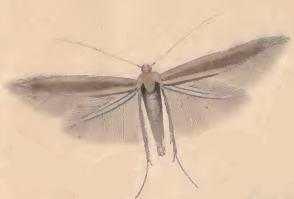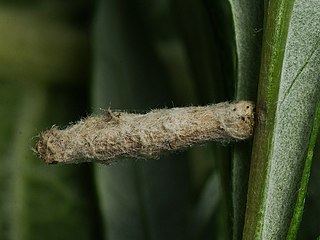
The following is a list of public holidays in Romania. According to Romanian law, Romania had 51 public holidays as of 2011, which cover 14% of the days of the year in the country.

The Coleophoridae are a family of small moths, belonging to the huge superfamily Gelechioidea. Collectively known as case-bearers, casebearing moths or case moths, this family is represented on all continents, but the majority are found in temperate areas of the Northern Hemisphere. They are most common in the Palearctic, and rare in sub-Saharan Africa, South America, and Australia; consequently, they probably originated in northern Eurasia. They are relatively common in houses, they seek out moist areas to rest and procreate.

Coleophora is a very large genus of moths of the family Coleophoridae. It contains some 1,350 described species. The genus is represented on all continents, but the majority are found in the Nearctic and Palaearctic regions. Many authors have tried splitting the genus into numerous smaller ones, but most of these have not become widely accepted.

Coleophora lusciniaepennella is a moth of the family Coleophoridae. It is found in most of Europe, except the Iberian Peninsula, the Mediterranean islands and most of the Balkan Peninsula and Russia. It occurs in forest-steppe biotopes.

Coleophora granulatella is a moth of the family Coleophoridae. It is known from most of Europe to China. It was recently reported from North America, with records from Alberta, British Columbia, Yukon, Arizona, Colorado, Michigan, Wyoming and Washington.
Coleophora albadomina is a moth of the family Coleophoridae that was first described by Giorgio Baldizzone and Hugo van der Wolf in 2004. It is endemic to Namibia.
Coleophora aquaecadentis is a moth of the family Coleophoridae first described by Giorgio Baldizzone and Hugo van der Wolf in 2004. It is endemic to Namibia.
Coleophora damarella is a moth of the family Coleophoridae that is endemic to Namibia.

Coleophora succursella is a moth of the family Coleophoridae. It is found from Fennoscandia to the Pyrenees and Italy and from France to Poland and Slovakia.
Coleophora bilineatella is a moth of the family Coleophoridae. It was described by Zeller in 1849. It is found from Germany to the Iberian Peninsula, Sardinia, Italy and Greece and from France to Romania.
Coleophora directella is a moth of the family Coleophoridae. It is found in most of Europe, except Great Britain, Ireland, the Iberian Peninsula and the Balkan Peninsula. It is also known from China.
Coleophora dianthi is a moth of the family Coleophoridae. It is found in most of Europe, Russia, Turkey and Iraq.
Coleophora meyi is a moth of the family Coleophoridae first described by Giorgio Baldizzone and Hugo van der Wolf in 2004 that is endemic to Namibia.
Coleophora arachnias is a moth of the family Coleophoridae. It is found in Iran, Afghanistan, Iran, Turkmenistan, Saudi Arabia, the Palestinian Territories and Oman.

De Prins van Oranje is a tower mill in Bredevoort, Gelderland, Netherlands which was built in 1870 and has been restored to working order. The mill is listed as a Rijksmonument.

De Prins van Oranje is a tower mill in Buren, Gelderland, Netherlands which was built in 1716 and has been restored to working order. The mill is listed as a Rijksmonument, a national heritage site of the Netherlands, listed by the agency Rijksdienst voor het Cultureel Erfgoed (RCE).
The Macroheterocera are a well supported clade of moths that are closely related to butterflies and macro-moths.






